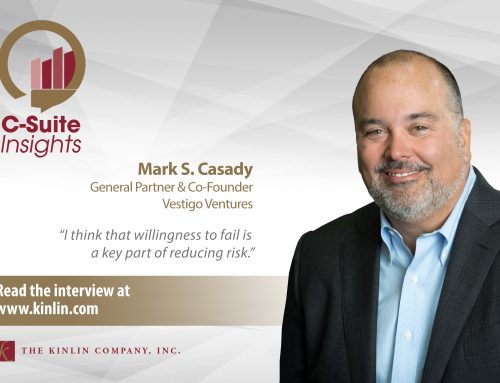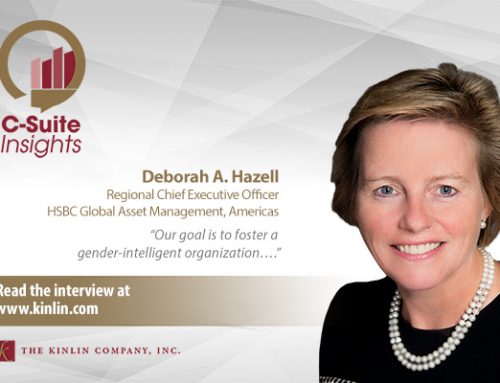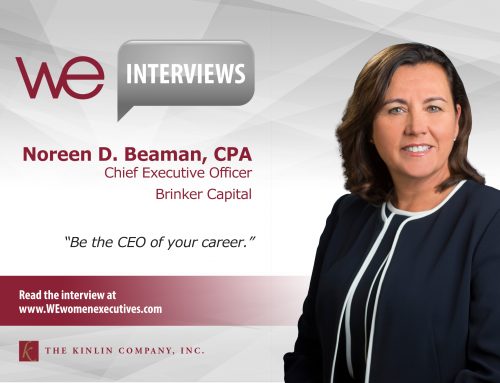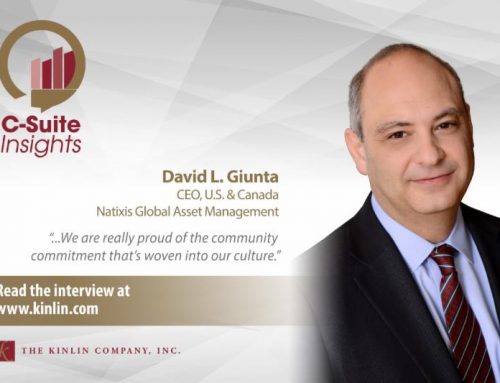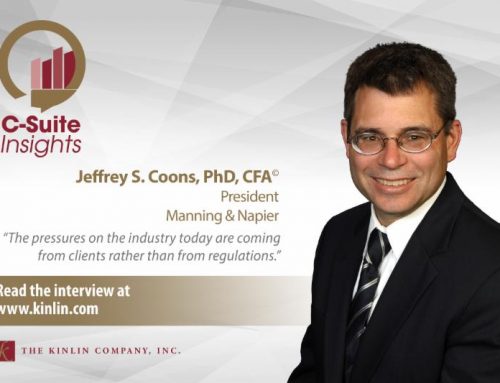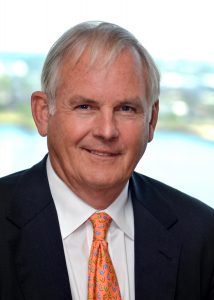 Churchill G. Franklin
Churchill G. Franklin
Chief Executive Officer
Acadian Asset Management
As co-founder and Chief Executive Officer of Acadian Asset Management, Churchill G. Franklin has oversight for approximately $86 billion in assets and 320 professionals located in offices around the globe including Boston, London, Tokyo, Sidney and Singapore.
Acadian specializes in active global and international equity strategies, employing sophisticated analytical models for active stock selection. Acadian deals primarily in equities, but is currently in the process of building out a multi-asset capability.
I recently sat down with Franklin in his Boston office to discuss Acadian’s quantitative approach, the importance of diversity, and the value of listening carefully to the marketplace.
Diversity in thought is critical
I began by asking Franklin about cognitive diversity, in particular how the concept relates to Acadian and the company’s quantitative approach to business. How do you view cognitive diversity, I inquired, and how do you use it in your work?
“The quantitative link is definitely a part of cognitive diversity. If you think about quantitative approaches, they’re empirical – you use data to try to predict the future. And if you think about that statement, data is supposed to represent facts. So we search for data that is factual – it doesn’t get modified, amended, or changed after the fact – which is not all data. Then we try to bring complete objectivity to interpreting that data. We take the emotion out of the investment process, because we believe that using emotion is a flawed approach to investing. If you can be more objective, more honest, and more direct, you have greater potential to add value.
“The question then becomes, ‘How do you take quantitative approaches and get the most that you can out of them?’ The process requires an element of creativity and innovation in conjunction with a structured and disciplined approach. The edge is to have an innovative approach to data as well as the engineering to interpret that data and come up with a factor that has the potential to predict tomorrow’s stock price a little better than someone else. We bring all that quantitative creativity to the table through diversity of thought.
“There are a lot of dimensions to this business: research, implementation, sales, client relationship management, and operations. The alpha-producing piece of asset management involves a wide range of people, including a number of PhDs in math, statistics, economics and finance. We have a lot of intellectual horsepower focused on searching through data, and that diversification of thought is crucial. And of course, I have a degree in American literature and our CIO, John Chisholm, has a degree in aerospace engineering, so we bring yet another set of thoughts to the table, which is helpful.”
Diversity in gender is challenging
Franklin’s comments on the value of diversity in thought offered a perfect segue into my next question, namely his feelings on gender diversity. We haven’t done very well addressing this issue within the asset management arena, I noted. How do you feel about that? Do you still think there’s room for improvement, and if so, how is Acadian addressing it?
“There’s definitely room for improvement, there’s no question about that. And guess what, it’s hard. We acknowledge that it’s hard and realize that when you have something hard to do, you have to be very focused, thoughtful and deliberate in how you get to the result that you want. Female CFAs are a minority and the same is true for female PhDs in statistics and math; finding women in any of those categories is challenging.
“Diversity efforts seem to be working better in private equity and the investment banks because they have more general needs and can appeal to a broader group of potential applicants. Acadian has very specific quantitative and technical needs, and thus we have to work really hard to identify a diverse pool of candidates.
“We have a women’s forum focused on women’s leadership issues, as well as a diversity committee that’s actively focused on realizing tangible results in broadening the applicant pool. We’re also working with Posse — I’m on the board of the Posse Foundation – as well as with people like you to try to make progress in diversifying the team. I have two daughters and they are tough on me about the issue.”
Excellence in delivery is essential
Having agreed that gender diversity was an ongoing struggle, I was curious to get Franklin’s take on some of the industry’s other hot button issues, e.g., changing distribution models, fee pressures, regulation, the shift to passive investing, alternatives becoming mainstream, and technology. What are your thoughts and what issues are you most focused on in 2017?
“There are a number of interesting concepts here. One, passive is evolving and a quantitative investment process is well suited to meet some of the investment needs of passive investors – lower risk, for example, or customized factor exposures. There are also some really interesting nuances that may favor active investing. For example, over the past 12 months, small cap stocks have not done as well as they have historically. There’s a perception that passive investing is piling money into large cap stocks, pushing large cap stocks up at the expense of small cap stocks. These trends have a tendency to reverse, particularly when every front-page story is talking about passive dominating. It just doesn’t go on forever. It never has and it never will.
“I had a conversation with a client who’s a major passive provider but who uses Acadian to provide an active quantitative global strategy within their framework. I asked them, ‘Should we be worried? You’re talking about being passive everything and we have an active strategy with you. Are we at risk?’ They said, ‘No. We believe in diversification, having active and passive, so when active comes back, we’ll be in a position to benefit from that, because these cycles don’t go on forever.’
“There are also a lot of interesting debates about fees, low interest rates and de-risking. We have a ‘Managed Volatility’ strategy that we started 10-plus years ago and at the time, we got no traction whatsoever because we were in the late stages of a huge bull market. Everything everybody touched was going up; nobody wanted to reduce risk. Then we hit 2008 and all of a sudden, everybody wanted to de-risk. Now we have close to $20 billion in that strategy because it hit the right environment for reducing risk. It is designed to provide equity market returns at lower risk.
“We’re also seeing a lot of focus on ESG and we’re finding that, because of the nature of quantitative investing, its application to ESG is really interesting. We believe that there’s a win-win here; if you search hard enough and collect the right data, you can find areas where you can do good for the world and add value where they overlap.
“Asha Mehta is one of our portfolio managers who has done a remarkable job with a strategy of activism and involvement. There’s a lot of data coming out of MSCI and other places about carbon exposure and other kinds of unpopular exposures in corporations, but the process has been slow. We’re joining in the general movement to encourage companies to disclose more ESG-related information more systematically.
“As for what keeps me up at night, it’s not easy, but it’s straightforward. Essentially, it’s management. If you can be clever enough and lucky enough to surround yourself with great, diverse-thinking people, you need to make the issues that are driving them crazy go away and keep them focused on doing their jobs.
“When an issue surfaces, I call the head of marketing, the head of investments, and the head of corporate operations and we brainstorm about how to solve the problem. They are my answers. I’m just the cheerleader and as soon as I actually try to do something, I’m stepping on somebody’s toes. My management style is to stay out of the way. This requires an active interference role: calming the noisy guy that’s throwing grenades or finding the win-win between two battling parties. When somebody comes to me and complains about somebody, I say, ‘You don’t want me to go talk to your boss. You need to talk to your boss. If you’re having trouble figuring out how to talk to your boss, here are three ideas, but go talk to your boss, then come back and tell me about it.’”
Responsiveness to the market is imperative
Having just heard that Franklin tries to stay above the fray in management, refereeing rather than directly intervening, I was curious as to where he concentrated his attentions. What three or four primary components of the business occupy your time, I inquired.
“I spend the bulk of my time with my five direct reports: the Chief Investment Officer, Chief Marketing Officer, Chief Operating Officer, Head of Communications, and my assistant, Val.
“The investment function is a whole universe of its own. Our product development effort has historically been driven by the needs of our clients, prospects and consultants. The ‘Managed Volatility’ strategy that I mentioned earlier is a perfect example. A client came to us and said, ‘Isn’t there a way to give us equity market returns with less volatility?’ We built that strategy, which is now a huge piece of who we are, and we took that action as a result of listening to a client and thinking about a problem.
“Here’s another example going back all the way to our roots. Bell Atlantic was our first client in 1988. Gary Bergstrom and I went to them and said, ‘We’ve got this whiz-bang, non-US small cap strategy that’s quantitatively driven. Nobody else is doing this. This is the coolest thing ever!’ Their response: ‘We really like your ties to academia, your intellectual content, and your quantitative, non-US focus, but we really don’t like non-US small cap. Could you build us a non-US core strategy?’ And that was our first client. So we thought to ourselves, ‘We wouldn’t be here without that thought, so maybe we ought to pay attention to what our clients are saying.’ As a result, almost all our product development efforts come from listening to what our clients are asking for, which also keeps us in-tune with the market.”
![]()

